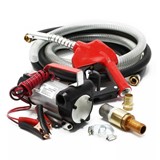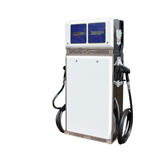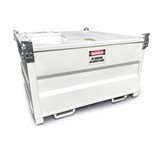Bolted under the cargo bay of each NASA space shuttle is a piece of equipment about a metre long. It is shaped like a narrow box and weighs a little over 100 kilograms. This small device is one of the most important items on board the shuttle. If it fails, NASA will call off an entire mission, bringing the crew back to Earth.
The function of this device – small enough to fit on your desktop – is power generation. Known as a fuel cell, it efficiently produces enough electricity to run all the equipment on the spacecraft, including the crucial life support systems.
What is a fuel cell?
Fuel cells, like batteries, transform chemical energy into electricity. However, unlike batteries, fuels cells don't store electrical energy. Instead, they convert energy from chemical reactions directly into electrical energy.
William Grove produced the first fuel cell over 150 years ago. He based his experiment on the fact that sending an electric current through water splits the water into its component parts of hydrogen and oxygen. So, Grove tried reversing the reaction – combining hydrogen and oxygen to produce electricity and water. This is the basis of a simple fuel cell.
Generating electricity from coal
In Australia, most of our electricity comes from burning coal. Transforming coal into electricity requires a number of steps. At each step, energy is lost from the system. Additional energy is lost during transmission along power lines. By the time electricity reaches your power point, less than 30 per cent of the energy originally stored in the coal is available to you.
Burning coal to generate electricity is not only inefficient, it is also polluting. It releases oxides of sulfur and nitrogen, contributing to smog and acid rain. (These emissions are more of a problem overseas than in Australia where the coal is relatively clean.) Burning coal also produces large amounts of carbon dioxide, a greenhouse gas.
Fuel cells offer a far more efficient and less polluting way of generating power than fossil fuel power stations or combustion engines. Fuel cells have another advantage - there are no moving parts.
Moving to a new energy source
Today, fuel cells are finding more and more applications as people realise what an effective source of energy they are. They are versatile, produce little pollution and wring almost every last drop of electricity from the fuels. Fuel cells hold so much promise that over $1 billion dollars will be spent on research and development worldwide between 1997 and 2000.
Several companies, such as ONSI Corporation and Fuji Electric, produce fuel cells commercially. Most fuel cells generate from 40 to 200 kilowatts of power – enough to supply office blocks, hospitals, supermarkets, mines and military bases.
Advocates of fuel cell technology say that this form of energy production is ideal for on-site generation of heat and electricity for a wide range of applications, including shopping complexes, educational institutions, and mining and drilling rigs. They can also supply energy for ships and submarines.
The Australian Technology Park in Sydney has a 200-kilowatt fuel cell that uses natural gas as a fuel. It supplies power to the Park's medical centres, laboratories and computer systems. This is the first Australian commercial application of such a cell. Commercial use of fuel cells will grow as better designs and new materials become available, reducing production costs.
Fuel cells for motor vehicles
Because of the need to reduce emissions of air pollutants, automotive manufacturers are exploring the feasibility of replacing the internal combustion engine with fuel cell technology. Electric vehicles are far less polluting than those using petrol or diesel fuel. However, electric vehicles that run on rechargeable batteries are very heavy because of the weight of the batteries and are only able to travel short distances before the batteries have to be recharged.
Ballard Power Systems, a Canadian company, is the world leader in this technology and has delivered a number of fuel cell buses to city authorities in the USA, and has formed alliances with major automotive manufacturers, including Daimler-Benz and Ford.
Daimler-Benz also launched a fuel cell bus, dubbed the NEBUS ('new electric bus'), which runs on hydrogen and a small, compact car (the NECAR).
Chrysler is also developing a fuel cell car. Recognising that change is easier in small steps, the fuel for the new car will continue to be petrol. So, motorists will still be able to drive down to the nearest service station to fill their cars.
Outwardly, the fuel-cell powered Chrysler will look similar to current cars. But it is likely to attract curious glances as it glides away from the petrol pump in near silence. Exhaust gases will be little other than nitrogen, carbon dioxide and water vapour. In future, when other fuels such as ethanol, alcohol and natural gas become available, a mechanic will tune the vehicle's fuel cell to run on them.
Power for the 21st century
Industrialised countries like Australia depend on the availability of vast amounts of cheap, convenient energy. Throughout the 20th century, we have relied on fossil fuels to supply this energy. While we will continue to burn fossil fuels in power stations and engines, fuel cells present a clean, efficient alternative for some of our energy needs. As we move into a new century, the devices that power exploration of space will offer us effective new ways of obtaining the energy we need on our own planet.
The Australian Academy of Science








-160x160-state_article-rel-cat.jpg)
